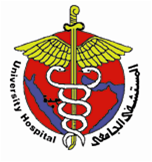

The Faculty of Medicine and University Hospital have organized a lecture entitled: “Ebola: Are We Prepared?” that was presented by Prof. Tariq Madani (Professor of Internal Medicine and Infection Diseases; Head of the Infection Control and Environmental Health; Head of Division of Infectious Diseases, Department of Medicine) in the main auditorium of the University Hospital on 11/01/1436H (05/11/2014G). The lecture was attended by a large number of faculty members, medical students, and hospital staffs.
During the review of the history of the virus, Prof. Tariq Madani had found out that there are at least 18 different types of viruses of which all are capable of causing viral hemorrhagic fever syndrome and one of it is Ebola Virus. Ebola virus shares similarities with other species. Similarities are: Disease transmission from animal to human zoonosis; It can cause damage to blood vessels and microvasculature (such as capillaries, arteries, veins, arterioles, and venules) that would lead to an increase in vascular permeability.
It is known that Ebola Virus invades, multiplies, and destroys the endothelial cells of the blood vessels and vascular endothelial cells which would lead to concomitant occurrence of disseminated intravascular coagulation causing hemorrhage that is characterized by many cases of Ebola Virus infection. Ebola Virus Infection in human and non-human is accompanied by proliferation of the virus in the liver cells.
Prof. Tariq Madani also discussed that the modes of transmission of the Ebola Virus is by direct contact with the blood, bodily fluids and secretions of an infected person. Contact with the patient without exercising proper precautions and infection control procedures may expose the healthcare worker to the virus.
He also described the symptoms of Ebola Virus Infection. Symptoms are fever, intense weakness, muscle pain, headache, sore throat, followed by vomiting, diarrhea, rash, impaired kidney and liver functions, and in some cases, internal and external bleeding.
Prof. Madani also emphasized the proper education to all hospital staff regarding the nature of the disease, and the important methods of control and prevention of the transmission. Special precautions must be implemented when conducting invasive procedures such as establishing intravenous lines, handling of blood, and suctioning secretions. Hospitals must provide individual gowns, gloves, masks, and goggles. He also said that avoid re-using the protective equipment. Only re-use protective equipment only after proper disinfection was done.
|